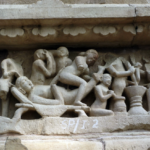A History of Crime: Investigations, Trials and Punishments

Criminal law is concerned with acts committed against society as a whole, and criminal offences, also known as crimes, are prosecuted by agents of the state such as police, public prosecutorial services and other governmental regulatory bodies, such as the Roads and Maritime Service in New South Wales or the Australian Securities and Investment Commission nationwide.
This can be distinguished from civil law which relates to grievances between individuals or, indeed, individuals and businesses such as companies as well as other organisations.
Origins of the word ‘crime’
Punishments for breaching the norms of society have been around since time immemorial, but the first reported use of the word ‘crime’ was around the year 1250 – during middle-ages, also known as the medieval era – which lasted from the late 5th century to the end of the 15th century.
The historical study of a word is called etymology, and the word ‘crime’ emanated from the old French word crimne, which in turn came from crimen, a Latin word, the definition being an accusation and cerno, denoting ‘I give judgment’ or ‘I decide’.
As is often the case, there is a level of uncertainty about the precise meaning of the word crime and exactly where it originated.
Romanian-born Canadian historian, linguist and etymological dictionary author, Rabbi Ernest Klein, posits that the Latin word crimen actually came from the ancient Greek word Krima, of which the definition is condemnation or a judicial sentence.
Initially, crimen came from the phrase, cry of distress, the Rabbi suggests.
It was around this period that the medieval era was coming to an end.
Ancient crime
Ancient historians generally accept that the archaeological period known as the middle palaeolithic era, spanning from 35,000 and 300,000 years ago, is when Neanderthals lived on earth, about this timeline.
Neanderthal is the nickname for the homo sapien neanderthalensis species.
The first recorded crime of murder is believed to have occurred some 430,000 years ago; it was an act perpetrated by what were known as homo heidelbergensis or homo antecessor.
It may have even been another species, but archaic homo sapien is a safe bet and covers all bases.
It would have been interesting to see the charge sheet, if the first recorded murderer(s) were caught.
But the murder of this primitive man found in Northern Spain was undoubtedly not the first case of murder committed; as the very nature of human beings and our ancestors lends itself to vengeful, punitive, opportunistic and otherwise self-serving acts against fellow members of our species.
Early criminal investigations
Common sense, that human trait, which is not afforded the respect it deserves, was the primary tool of early investigators of crime, which evolved to the highly sophisticated tools available to modern day police forces.
Police forces in the United Kingdom and Europe, which commenced from the Middle Ages, based on ancient laws, would have thought the modern techniques were the work of sorcery, had they been able to look into the future.
However, the first police department is credited to ancient Egypt, formed in 3000 BCE, overseen by the pharaoh, who selected key positions, although, the more reliable records suggest at that time of the formation of the police department, King Narmer ruled Egypt.
Ancient historian scholars, decree that ultimately King Narmer became the first pharaoh of Egypt and as such was the divine intermediary between the citizens of Egypt and the Gods.
For the purpose of this article, the pharaoh as a statesman made law, even although he also collected taxes and waged war.
High tech investigation techniques
Ancient murders, arson and cannibalism are amongst many crimes of the past that result in successful outcomes, because of the ability to implement new archaeological methods borne out of modern scientific inventions.
Technical terms such as elemental & isotopic analyses of the human bone, from more advanced anthropological and biochemical methods, including imaging innovations like 3D surface acquisition and computed tomography, are amongst a number of many scientific inventions, which permit a vast increase in convictions today.
All of this is explained by Pier Matteo Barone, who heads a team of close to 50 of the most eminent geoscience, geophysical, vulcanology, petrography, forensic geology, forensic pathology, radiology, biology, anthropology, archaeology and associated scientific specialists from all over the world, in a 2021 publication of Crimes of the past: archaeological and anthropological evidence.
Trials and punishments through the ages
Trial by ordeal was a middle-ages method of determining the innocence or guilt of an accused in all sorts of crimes, but particularly of witchcraft.
It was predicated on what was called iudicium dei meaning divine intervention, in essence, that God would intervene to protect you from whatever the ordeal by trial was, be it fire, water of whatever.
Of course, everyone who was tried in this manner, despite no statistics being available, would all have been found guilty one would have thought.
However, there is a significant number of historians who subscribe to the theory that this method wasn’t quite as clear cut than that. It appears that the clergy of the Catholic church who conducted many such trials, used some basic psychological principles, in that they took their time when preparing the test and during this period observed the accused’s demeanour to ascertain guilt or innocence.
Certainly, a flawed psychology!
Trial by fire
Trial by fire involved the accused having to carry a hot iron, or alternatively, walk over hot coals which was based on the principle that the innocent would not be burned.
Whilst all would be burned, the degree of healing of the wounds were inspected several days after the ordeal, with a determination that if the wounds had healed, the accused was declared innocent and if not, pronounced guilty.
Trial by water
This ordeal was more prevalent in Western culture and required the accused to be thrown into a pool, with guilt pronounced if the person sank and innocence if he or she floated.
However, in some jurisdictions, the guilt or innocence was reversed with regard to the floating or sinking aspect!
How flawed psychology appears to have featured in the criminal justice system in time gone past, though perhaps not so much now, at least in the majority of cases.
It seemed that ancient lawmakers had their own variation of noble cause justice, otherwise known as noble cause corruption!
Trial by combat
Battle to the death saw the person who was accused, challenge their accuser to a fight, either with swords or what is called jousting by horseback and lance.
Trial by ordeal of blood
This form of judgment existed during the reign of Richard the Lionhearted in the 1100s and was used to identify murderers, based on Shakespeare’s Macbeth, in which Lady Macbeth couldn’t wash the blood off her hands.
This was loosely based on the fact that sometimes blood from wounds may flow if the blood hadn’t coagulated and if a suspect was forced to touch the body and it bled, then the suspect was deemed to be guilty.
Of course, the suspect had to be brought to the body, within 6 to 12 hours, for the lawmaker’s noble cause justice to have any chance of success, as according to forensic scientist, A.J. Scudiere, this is approximately the period in which livor mortis sets in.
This is when blood settles at the lowest section of the deceased and in essence ceases to further bleed. Of course, the estimated time for this to occur varies, depending on the wounds, etc.
Trial by sacrament
Religious ordeal was introduced to test Christian clergy in medieval Europe, such was the fear pertaining to witchcraft and heresy.
Whilst many of the general population who had been accused of witchcraft, suffered burning at the stake (that is if they hadn’t first drowned in some jurisdictions by trial by water ordeal), the Catholic clergy faced trial by sacrament, which involved the priest taking holy communion, believing if he was guilty then he would choke on the sanctified communion wafer.
No records exist of any clergy being found guilty by this method.
Whilst in 1215, Pope Innocent III banned this method for his clergy and in general trial by ordeal for the population, it resurfaced on many occasions of unrest within the church.
The penalty for a person found to have borne false testimony against an accused, was either banished into exile or sentenced to death.
Trial by ordeal in other countries
Whilst we discussed trial by ordeal in medieval Europe, this mode of meting out justice was found in colonial America, Southeast Asia, India and significant parts of the African continent.
These trials by ordeal involved many different forms, predominantly involving poison plants, snakes, crocodiles and other wild animals etc., restricted only by the cruel, corrupt and ignorant beliefs of certain communities.
Trial by ordeal in Australian Aboriginal societies
Regarded as brutal, Aboriginal tribal law, otherwise known as payback, continues to be practised to be present day, despite it being unlawful under the laws of Australia.
Whilst it is based on an honourable system, to ensure continued reasonable relationships after a dispute is settled, it unfortunately doesn’t always work out that way.
Payback is regarded as a form of dispute resolution whereby at times, people are seriously hurt or even killed.
Prior to colonisation, this form of customary Aboriginal law was predicated on all sorts of crimes, for example, theft, adultery, breaching cultural boundaries and what was regarded as sorcery amongst different tribes.
After colonisation, it included more serious forms of crime, in the main, such as murder, kidnapping and assault by European settlers.
Ancient Aboriginal law which has been practised for over 40,000 years, is alive and well and has little or no respect for the Australian constitutional laws, by a significant proportion of first nations peoples.
Law grounds
‘Law grounds’ are the tribal lands where, generally on the borders of each tribe, councils of Aboriginal elders meet to discuss aspects of traditional Aboriginal law, to discuss where children were to be initiated and to discuss settlement of disputes.
Pointing the bone or singing a person
This form of payback involves a senior Aboriginal elder who is regarded as having spiritual powers to arrange ill health or death on a person who has committed a crime, which includes disrespecting their Aboriginal culture.
In addition to an elder having the power to sing harm to a person, there are also those called Featherfoot, (or Feathafoot ) which is a kurdaitcha man in Arrernte, in essence, a sorcerer in Aboriginal spirituality.
This individual is a shaman of sorts, of the Central Australian Arrente Aboriginal people, called Featherfoot by other tribes.
Indeed, as the Featherfoot is essentially brought in to pass a death sentence on an individual, some hospitals dealing with Aboriginal patients who had lost the will to live as a result of the psychosomatic illness caused by a belief in what was regarded as voodoo magic, trained their nursing staff to recognise such matters.
Spearing
This penalty is generally spearing the individual to the calf or thigh and is a common penalty for a crime under Aboriginal traditional law, though this sometimes results in serious injury or death of the victim.
Burning hair
Burning the hair from an offender’s body is one of the penalties perpetrated as a form of payback.
Duelling
Boomerangs, spears and fighting sticks are the weapons used in this form of resolution dispute whereby adversaries face off to essentially determine who is in the right.
Shaming
Shaming or public ridicule, more rigorous forms of teaching, certain arrangements for compensation and exclusion from the community, were all other consequences in not only Aboriginal traditional law, but also in other Indigenous countries, with variations on Australia’s first nations peoples’ law.
To the modern day: DNA and what it means for crime
DNA , which stands for deoxyribonucleic acid and is a grouping of molecules, which are capable of transmitting hereditary genes from parents to children and so on.
In crime, it is used to establish the identity of potential suspects, but in general it is used to explore the evolutionary history of an organism.
It was discovered in 1953 by James Watson and Francis Crick, commencing their research in 1951, following on from Oswald Avery and his two collaborators, Colin MacLeod and Maclyn McCarty who had sort of identified how important this new scientific discovery was, approximately a decade prior, in 1944.
This was announced by way of an appearing in the weekly British scientific magazine, Nature, on 25th April 1953.
All of this advanced the forensic science of modern molecular biology, which indicate how genes control the chemical processes within cells in the body of humans and animals.
Watson and Crick, utilised and paid tribute to the countless experimental material of hundreds of scientists, resulting in the acceptance of DNA as the master molecule of life.
Also mentioned in despatches was that it was in 1869 that a Swiss physiological chemist, Johann Friedrich Miescher who according to many scientific historians, first identified what became known as the DNA molecule, which the scientist at the time called nuclein, which was essentially the discovery of nucleic acids.
There were other earlier scientists who no doubt also contributed to the ultimate discovery by Watson and Crick, but didn’t quite appreciate it at the time, as appears to be the way with scientific research of such complexities.
Revelation of the secret of life is the result of the scientific community at that time:
Organic chemist, Alexander Todd, biochemist, Erwin Chargaff, Maurice Wilkins and Rosalind Franklin, biophysicist and chemistry scientist respectively and Jerry Donohue, a physical chemist who actually shared work with Watson and Crick, were all instrumental in changing the face of crime-solving, increasing the conviction rate of millions of crimes by stratospheric dimensions.
Of course, DNA has also benefitted many other industries, in particular the medical profession, leading to advancements in curing illnesses and prolonging life of human beings.
It has also greatly benefitted the life of the world’s fauna and flora.
An interesting aside is that Watson and Crick had a fleeting falling out, due to Watson’s commercialism of the discovery.
DNA ‘s introduction to crime – DNA fingerprinting, blood, saliva, hair, sweat urine and semen:
1986 was the year that British police asked for help in the case of a murderer, from Dr Alec J. Jeffreys of the university of Leicester.
This involved DNA fingerprinting and cleared the suspect.
A year later, the forensic science of DNA led to the conviction of Robert Melias in the United Kingdom and Tommy Lee Andrews in the United States of America.
There are numerous methods whereby crimefighting authorities gather DNA for the purpose of profiling and forensic science laboratories are the quickest growing and most expensive to operate than all of crimefighting departments.
In addition to those mentioned above, are:
- Blood splatter pattern
- Hair & other fibres
- Gunshot residue
- Toxicology
- Biological fluids
- Skin tissues
As reputable geneticist, Richard Spritz said – we are not even at the end of the beginning.
And neither is SCL with this article, as there is so much more to come in relation to the evolution of crime, such as how vast this subject is.
Australia’s introduction to DNA
DNA was initially introduced in Australia in 1989, when it was used to assist in the conviction of an ACT prisoner for sexual assault.
Since then, it is used extensively through Australian State and Territory courts and is responsible for both conviction and exoneration of accused persons.
Statistics are sparse in relation to precisely which parts of a potential conviction or acquittal that DNA played its part.
DNA is not infallible
Contrary to what we see in movies and television shows, DNA evidence is certainly not infallible.
Indeed, in recent times, Victoria’s deputy commissioner of police, Simon Overland, was forced to reopen approximately 7,000 cases from the previous 20 years.
This was the result of an error, mistakenly tested with DNA from the crime scene of a murder and rape, which had been taken from elsewhere, resulting in the acquittal of a Victorian prisoner. That case caused a re-examination of the flaws in the way forensic samples had been obtained, tested and indeed reported – which were almost invariably favourable to the prosecution; often creating the potential of miscarriages of justice.
In Western Australia, a DNA analyst went so far as to fabricate forensic matches over several years. He was sacked but not before many were convicted on the strength of such ‘evidence’.
Who is watching Queensland health forensic science services (QHFSS)?
Queensland, Australia, in late 2022 saw the beginning of hundreds of criminal cases concerning convictions based on, part at least, of DNA results put into question on the strength of what appears to be flawed blood samples.
A leading DNA lawyer, Ron Behlau who assisted in the DNA guidelines for Queensland, said that the focus has been on what matters may not have been properly prosecuted because of suspect practices at the Queensland health and forensic science services (QHFSS).
Mr Behlau’s comments follow a finding of alarming problems at QHFSS, by DNA commissioner, Walter Sofronoff, KC and that it bore similar traits to that of Victoria’s lawyer x saga; particularly as it related to convicted persons in circumstances where suspect evidence was placed before juries to secure convictions.
The finding of the King’s Counsel, in essence, appears to suggest that the court was either lied to or woefully misled and stated that serious problems have existed for years amounting to grave maladministration involving dishonesty.
A scandal of gigantic proportions awaits an outcome.
New South Wales had an isolated DNA error, which led to the wrongful conviction of a man in 2009 but found no evidence of similar errors after reviewing 17,000 other cases and similarly in West Australia, an error caused the imprisonment of a man, although in this case the error was not reported for a year after its discovery.
The renowned Innocent Project claims approximately 400 prisoners, including in excess of 20 who served time on what was called death row, the cell block reserved for those inmates awaiting execution, were ultimately acquitted as a result of DNA testing.
Although, on average, many served in excess of a decade in prison until exonerated and freed.
Modern crime
Theft for example, in times gone past, was generally associated with breaking into homes, businesses and cars, stealing from shops and individuals and perhaps involved pickpocketing.
Fast forward and we now have online banking and various forms of e-commerce, which involve on-line hacking and scamming, which may include withdrawing cash from an account which has been hacked, or alternatively, payment to return data stolen on-line from a business and even a large corporation or government institution.
Modern technology has not only benefitted humankind in many positive ways, but it has also benefitted modern crime in as many ways.
Also included in modern crime are:
- Identity theft, whilst affecting the individual, it can also be used to launder cash, commit fraud and be utilised in cases of corruption, human trafficking and terrorism.
- Counterfeit goods affect the brand of the bonafide product and depending on what the goods are, may be a danger to the consumer.
- Blackmail is the price asked by this crime, to return stolen data.
- Cybercrime involving ransomware campaigns costing billions of dollars and affecting the livelihood of many people, notwithstanding the national security of many nations.
The United Nations Office on Drugs and Crime (UNODC)
UNODC, amongst many other global crimefighting authorities, constantly warn of the new and emerging crimes affecting the world, emphasising and elaborating on transnational organised crime, as per the following:
- Piracy allows large sums of money to put into many other facets of transnational criminal activity, such as the trafficking of drugs and other goods, but more importantly, people.
- Organ trafficking is a less known form of migrant trafficking by the general public, perhaps in part, as a result of the macabre nature of what it entails; that of those trafficked having to pay by way of having an organ removed.
- Fraudulent medicine affects in a multidimensional way, the health of millions of people, including the socioeconomic effects it has.
- Trafficking in cultural property which destroys the cultural identity of nations, as many items are sold for vast profits on platforms such as the dark web; again, certainly resulting in the nefarious activities generally associated with transnational criminals.
- Terrorism was discussed on the 25th January 2023 at the ninth meeting of the United Nations global counter-terrorism coordination compact, with the Secretary-General, Antonio Guterres, reiterating that terrorism remains a global scourge, making it more difficult to stabilise governments and even to combat climate change.
- The United Nations Office of Counterterrorism (UNOCT) has conduct of this offence,
which is why the 45-member coordinated compact as it is called, has a regional program from 2023 until 2029, not for one minute underestimating that the legacy of terrorism is always there.
Whilst these crimes were around for a very long time, they are regarded by global crimefighting authorities, such as UNODC, UNOCT and the European union agency for law enforcement (EUROPOL) as new and emerging more modern crimes; for the simple fact of the advanced technology, which facilitates the criminal activity on a much larger and profitable transnational scale.
Added to this, the same highly sophisticated technology allows by virtue of some still encrypted platforms, less opportunity of these crimes being detected in a timely manner.
It is the advanced technological and transnationality factors, which allows the description to accurately depict them as new and emerging crimes.
Crimefighting tools
With new categories of crime to combat, new technology was required, and our scientists and engineers sought to delivers these through the introduction of:
- Facial recognition software,
- Voice technology,
- Biometrics,
- Thermal imaging,
- Automatic licence plate recognition,
- Drones,
- Artificial intelligence,
- Robotics,
- Digital forensic software, and
- Gunshot detection systems.
So, the investigation, prosecution and punishment of crimes – and indeed alleged crimes – has had a long and chequered history.
And although modern methods may be preferred to some of those previously used, we certainly still have a long way to go in terms of ensuring justice prevails in modern criminal justice systems.






